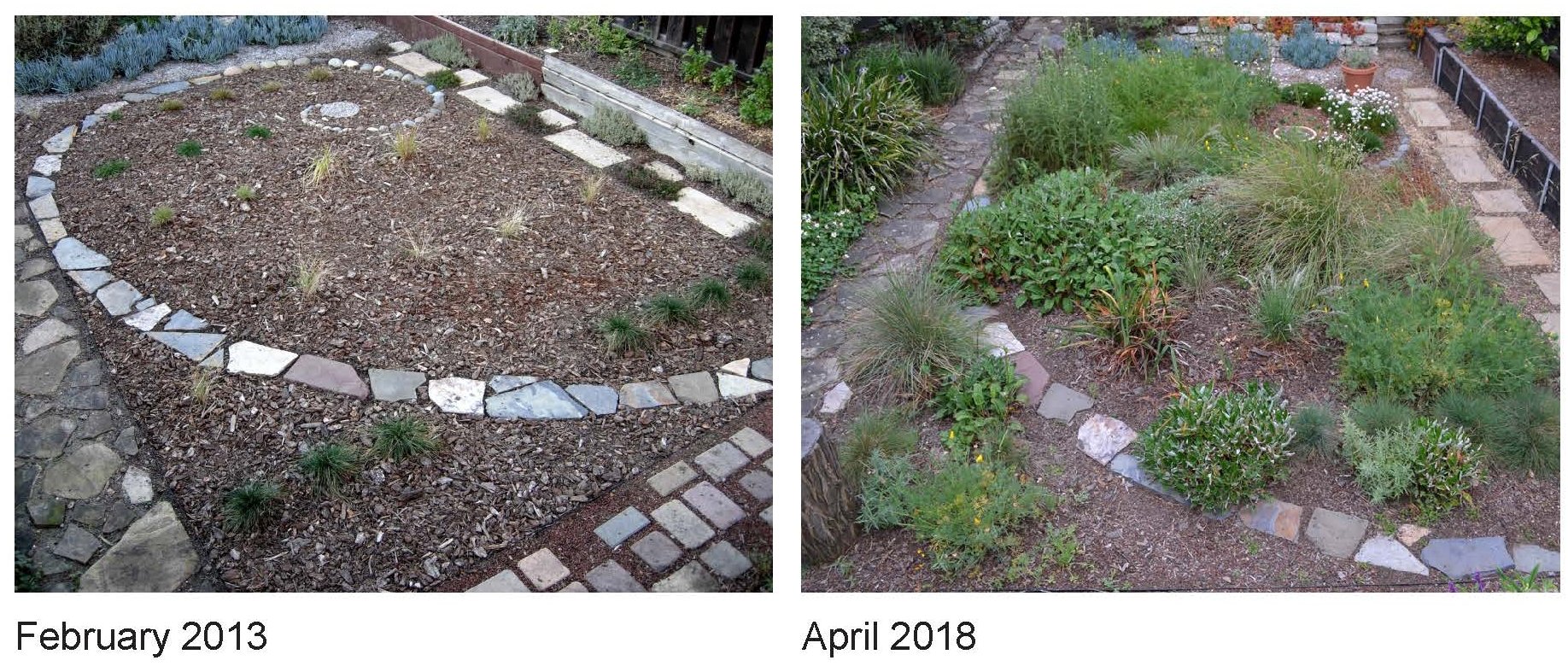53. The Native Meadow Experiment - Maturity
I’ve been enjoying the Spring growth in my backyard meadow over the last few months and it really is becoming a fine mature garden. Things have grown in so much that what I mostly do now is cut back the faster growers to keep them from overtaking the others – not a bad problem to have. It was 5 years ago in February that I planted the meadow with grasses, and then planted various complementary plants in November of that same year. Not all survived, but many have really taken off and easily filled the available space to create a natural looking native habitat oasis.
The Yarrow (Achillea millefolium) and the California Poppies (Eschscholzia californica) are the most aggressive plants in my native meadow palette - as expected. The surprise is that the California Buckwheat (Eriogonum nudum auriculatum) and Red-Flowered Buckwheat (Eriogonum grande var. rubescens) have also become fast growing competitors. They have been extending branches out horizontally along the ground to push into new territory quickly. The Poppies spread out similarly and can lay their growth over top of the smaller grasses and start to smother them, so I keep them trimmed back even if that means losing some flowers. Plus they are prolific seed producers and I find Poppies sprouting up all over the garden.
Yarrow spreads with underground runners that I have seen coming up through other plants. In one corner where I am enjoying a nice cluster of White Sea Thrift (Armeria maritima ’Alba’), I am having to actually dig a shallow trench at the edge of the Achillea to keep it in check.
Looking back at the original plant list, I’ve learned that some grasses simply weren’t suited for this exact meadow plot, I think mainly because they got too much sun exposure to be very drought tolerant. The 2 Deschampsia and 2 Calamagrostis varieties that I planted originally both struggled to survive, with only one Calamagrostis foliosa still alive. The Red Fescue also appears to like a little more water – several of the plants are still there but died back significantly during the dry summers, greening up again with spring rains. I did plant a couple of new grasses this spring: one Deer Grass (Muhlenbergia rigens) and a new Reed Grass (Calamagrostis foliosa) to help balance out the masses of Poppies, Yarrow and Buckwheat.
I’ve also learned a lot by watching the California Fescue grass mature – early on several of these grasses seemed to be doing nothing, but it turns out they are just a little slower to grow than other grasses. At this point one of the California Fescue is really getting big and looking more like I expected - impressive!
Overall I’m feeling great about this little ‘experiment’, I’ve got a very nice looking garden centerpiece that needs almost no supplemental water, is low maintenance and is visited by all kinds of birds, hummingbirds, butterflies, and other insects. I still do some weeding, especially this time of year, but the plants have grown in so much now that newly sprouting weeds have a lot of competition. It could be fun to just let things go and see what a pure "survival of the fittest" approach would lead to in the meadow; I think it would become a pure Yarrow and Poppy plot within a few years if I let it!
References:
To read the whole story and find the reference writings that inspired The Native Meadow Experiment, see these earlier blog articles:
2. The Native Meadow Experiment
8. The Native Meadow Experiment – Soils
13. The Native Meadow Experiment – Plants
16. The Native Meadow Experiment – Installation
24. The Native Meadow Experiment – Summer & Fall
30. The Native Meadow Experiment – Spring Update
36. The Native Meadow Experiment - Maintenance
39. The Native Meadow Experiment – Spring in a Drought






